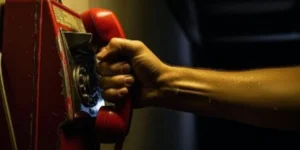Second-Hand Trauma, How Families Develop Addictions of Their Own

When someone in a family becomes addicted, the spotlight usually falls on them, their behaviour, their health, their chaos. But behind that chaos is another world, the people trying to hold it all together. The mother who can’t sleep until her child comes home. The partner who checks bank statements, phones, and lies. The sibling who becomes the peacemaker.
Addiction doesn’t happen in isolation. It ripples. And those ripples don’t stop when the addict gets sober, they keep spreading, reshaping everyone around them. Over time, families develop their own forms of addiction, to control, to worry, to rescuing. It’s called second-hand trauma, and it’s as real as the chemical dependency itself.
Living in the War Zone
Addiction turns a home into a battlefield where love and fear constantly collide. You never know which version of the addict will walk through the door, the sweet, apologetic one or the angry, intoxicated one. Every phone call could be good news or terrible news. Every day could bring hope or heartbreak. That unpredictability rewires families. The body adapts to constant stress. Cortisol levels rise. Sleep disappears. Emotional regulation becomes impossible. Even when the addict isn’t home, the tension is, like a ghost that never leaves.
Family members learn to live in survival mode. They walk on eggshells, scanning for danger, pre-empting disaster, always ready to fix, hide, or rescue. It’s not a conscious choice, it’s instinct. They become addicted to the adrenaline of chaos because peace feels foreign, even frightening.
The Addiction to Control
The family of an addict often becomes obsessed with control, not because they want power, but because they’re desperate for safety. They start micromanaging everything, checking messages, monitoring spending, setting rules, enforcing boundaries that never hold. At first, it feels responsible. But over time, it becomes compulsive. The brain learns to associate control with relief, the same way an addict associates a substance with calm. When things spiral, control becomes the fix.
Mothers often take this role hardest. They become detectives, nurses, and therapists rolled into one. They try to save their child from overdose, jail, or shame. Fathers may retreat, shut down, or focus on work, their own way of coping with helplessness. Siblings oscillate between anger and empathy, torn between wanting to protect and wanting to escape.
The household ends up orbiting around the addict, every emotion dictated by their state. The entire family becomes addicted to reacting.
The Emotional Collateral
Living with addiction teaches families one painful lesson: don’t feel too much. They learn to shut down emotions because emotions get used against them. Crying doesn’t help. Arguing makes it worse. So they go numb. They learn to smile in public while breaking in private. They tell lies to protect appearances, “He’s just having a rough time.” “She’s doing better now.”
But repression has consequences. Families that spend years suppressing fear, anger, and grief eventually find those emotions coming out sideways, through anxiety, depression, physical illness, or substance use of their own.
That’s how second-hand addiction starts. Maybe it’s wine at night “to take the edge off.” Maybe it’s workaholism, staying busy to avoid feeling. Maybe it’s food, shopping, religion, or rescuing others. It’s not about the object, it’s about the relief it offers.
Codependency, The Family’s Drug
Codependency is often misunderstood as devotion. “I’d do anything for them,” sounds noble, but in addiction, it’s toxic. Codependency is when love becomes survival. When your identity depends on fixing someone who’s broken. In many families, codependency becomes the silent addiction that mirrors the addict’s behaviour. The addict uses substances to escape pain, the codependent uses caretaking. Both are driven by fear and shame. Both avoid reality. Both feel powerful while slowly losing control.
A codependent family member may spend years managing another person’s chaos, making excuses, covering up, paying bills, and absorbing blame. They don’t realise that this behaviour feeds the addiction. By rescuing the addict from consequences, they remove the motivation to change.
But stopping is terrifying because it feels like abandonment. So they keep rescuing, even as it destroys them.
The Children Who Grow Up in Chaos
Children who grow up in homes affected by addiction rarely escape untouched. Even if they never touch a substance, they carry emotional residue into adulthood, hypervigilance, perfectionism, people-pleasing, and distrust. These children often become “parentified”, taking on adult responsibilities to stabilise the family. They learn to read moods instead of words. They become experts at emotional weather forecasting. Later in life, they either replicate chaos in their own relationships or avoid intimacy altogether.
Many adult children of addicts end up choosing partners who are emotionally unavailable or controlling, because chaos feels familiar, and familiar feels safe. It’s a cruel psychological loop, re-enacting what hurt them because it feels like home.
The Family That Never Heals
When an addict finally gets sober, families often expect relief, a clean slate, a fresh start. But instead, they find something strange: the chaos is gone, but they don’t know how to live without it. Peace feels alien. Silence feels suspicious. Family members keep waiting for the next relapse. They can’t relax. The nervous system, trained for war, doesn’t trust safety.
This is why family therapy is crucial in recovery. Addiction is a family disease, it infects everyone. If only the addict gets treatment, the system stays sick. The family continues to operate in old patterns, even without substances present. Recovery requires everyone to heal, not just the user.
The Addict Who Becomes the Scapegoat
In many homes, the addict becomes both the problem and the distraction. Their chaos hides deeper family dysfunction, unspoken resentments, trauma, or generational pain. It’s easier to focus on the addict’s drinking than to face what created the emotional void that addiction filled. When the addict leaves or recovers, those unresolved issues surface. Marriages collapse. Parents confront guilt. Siblings reveal anger. The family system can’t survive without the “identified patient”, the one everyone blamed.
That’s the paradox: the addict carries the family’s pain, often unknowingly. They act out what everyone else represses. When they get better, the truth has nowhere left to hide.
Addiction as a Mirror
Addiction exposes the fault lines in families, the lack of communication, boundaries, and emotional honesty. It shows how love can turn into control, how help can become harm. But it also offers an invitation: to heal what’s been broken for generations.
Many families discover, through therapy or support groups like Al-Anon, that they’ve been living in survival mode for years. They begin to see how patterns of avoidance, control, and silence have passed down through time. Grandpa drank. Dad worked himself to death. Mom worried herself sick. The methods change, but the motive stays the same, avoid pain at all costs. The cycle only breaks when someone decides to stop running.
The Family’s Recovery Process
Family recovery isn’t about forcing the addict to change, it’s about learning how to live even if they don’t. It’s about setting boundaries that protect your peace instead of trying to control theirs. Recovery starts when family members stop managing the addict and start managing themselves. That might mean refusing to cover up lies, saying no to financial bailouts, or simply learning to detach with love.
It’s not cruelty, it’s sanity. Love without boundaries becomes self-destruction. Boundaries don’t mean giving up on the addict, they mean giving up on the illusion that you can save them. Therapy, support groups, and education are vital. They help families rediscover themselves outside of the addiction narrative. Over time, they begin to remember who they were before chaos became normal.
The Emotional Detox
For families, recovery feels like detox, but instead of flushing out substances, they’re releasing years of tension, guilt, and anger. At first, it feels worse. Emotions that were numbed by fear resurface, grief for lost years, shame for things said, anger for boundaries crossed.
But as the emotional fog clears, clarity emerges. Families begin to see addiction not as a curse but as a teacher, one that forced them to confront truth, vulnerability, and resilience. Many discover that healing doesn’t mean forgetting. It means remembering differently. The pain becomes part of the story, not the definition of it.
When Families Become Addicted to Hope
One of the hardest addictions for families to break is hope, not healthy hope, but the kind that keeps you stuck. The hope that this time will be different. That this apology will stick. That this relapse will be the last.
Hope can be as intoxicating as any substance. It keeps people in toxic cycles far longer than they should stay. True healing begins when families stop hoping for the addict they want and start accepting the one they have. Only from that acceptance can real change happen, for both sides.
Breaking the Silence
Second-hand trauma thrives in silence. Families often protect the secret of addiction because of shame, worried about judgment, gossip, or stigma. But secrecy is the oxygen addiction needs to survive. Breaking that silence, talking openly about pain, seeking help, sharing stories, is what transforms trauma into recovery. Communities that talk heal faster than those that hide.
Every family dealing with addiction should know, you’re not crazy, and you’re not alone. The chaos you feel inside is a normal reaction to an abnormal situation. And recovery isn’t about perfection, it’s about learning to live again without waiting for the next crisis.
The Other Side of Addiction
When an addict recovers, they rebuild a life. When a family recovers, they rebuild a home. Both are acts of courage. Families who face addiction head-on often emerge stronger, more compassionate, and more honest than they were before. They learn that love isn’t rescuing; it’s respecting. That strength isn’t control, it’s acceptance. That peace isn’t avoidance, it’s truth.
The addiction may have started with one person, but recovery belongs to everyone.





